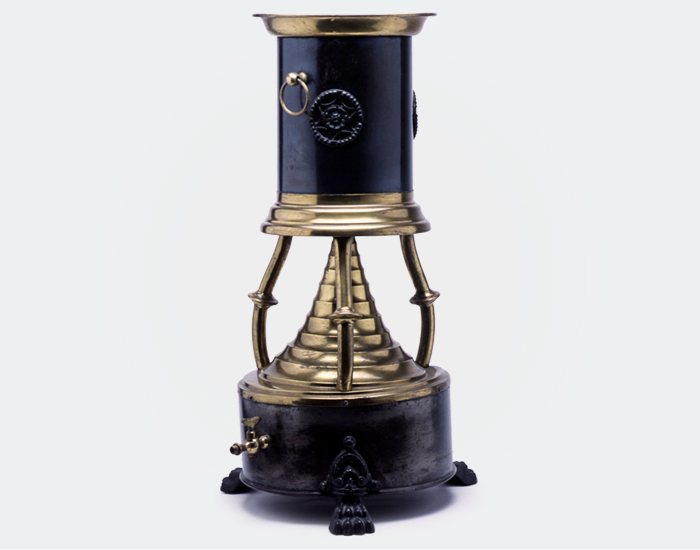
Steel and brass
Mid s. XIX
Registry number: CR-153
Photography: Calorífer parabólico
Unknown photographer
© Museo del Gas de la Fundación Gas Natural Fenosa, 2017
This item, which is preserved in the Gas Natural Fenosa Foundation Gas Museum collection, is a heater and its function was to heat a room by gas combustion. Several models evolved from this piece of equipment. The first heaters were closed and did not have a system to remove the combustion gases. They were also made with a deposit of water that was heated using the heat of the air. What we present here is a parabolic heater because it had round reflector that allowed the heat to be retrieved.
The design stands out because of its black and nickel plate and the legs at the base that represent those of an animal. In contrast, other heaters from the time were made from ceramic glaze, enamelled plate and even forged iron. With regards to how it worked, a circular burner was located at the bottom and this is where the combustion took place after mixing gas with air. The hot gas rose up to the top part of the machine and was removed by a small extraction chimney. This meant that there was no contact with the hot air that was distributed around the room because of the double position opening. This French-manufactured item was used in bourgeois households in the mid-19th century. Then, when they were commonly used in homes, other square-shaped models were manufactured, and this item became called a “stove”.